The Connection Between Black Cats and Halloween
Black cats have long been iconic symbols of Halloween, their sleek, shadowy figures often seen prowling through the imagery of this spooky season. But why have these mysterious felines become so intertwined with Halloween traditions?
Historical Roots and Superstitions
The association between black cats and Halloween dates back to ancient times when the festival of Samhain was celebrated by the Celts. This festival marked the end of the harvest season and the beginning of winter, a time when the veil between the human and spirit worlds was believed to be at its thinnest. Black cats, with their nocturnal habits and stealthy movements, were thought to be companions of witches or even witches themselves in disguise.
During the Middle Ages, black cats were often linked to witchcraft and the occult. They were believed to possess supernatural powers and were sometimes feared as omens of bad luck or death. This fear was further fueled by the persecution of witches, where black cats were often seen as their familiars.
Modern Symbolism and Pop Culture
In contemporary times, black cats have shed much of their sinister reputation and are now celebrated as symbols of mystery and magic. Halloween, a holiday that embraces the eerie and the supernatural, naturally adopted the black cat as one of its mascots. Decorations featuring black cats with arched backs and glowing eyes are staples of Halloween decor, evoking a sense of enchantment and the unknown.
Black cats also appear in various forms of Halloween merchandise, from costumes and masks to candy containers and greeting cards. Their image is used to evoke the playful yet spooky spirit of the holiday, blending fear with fascination.
These enigmatic creatures continue to captivate our imaginations, embodying the magic and mystery that make Halloween such a unique and enchanting celebration.

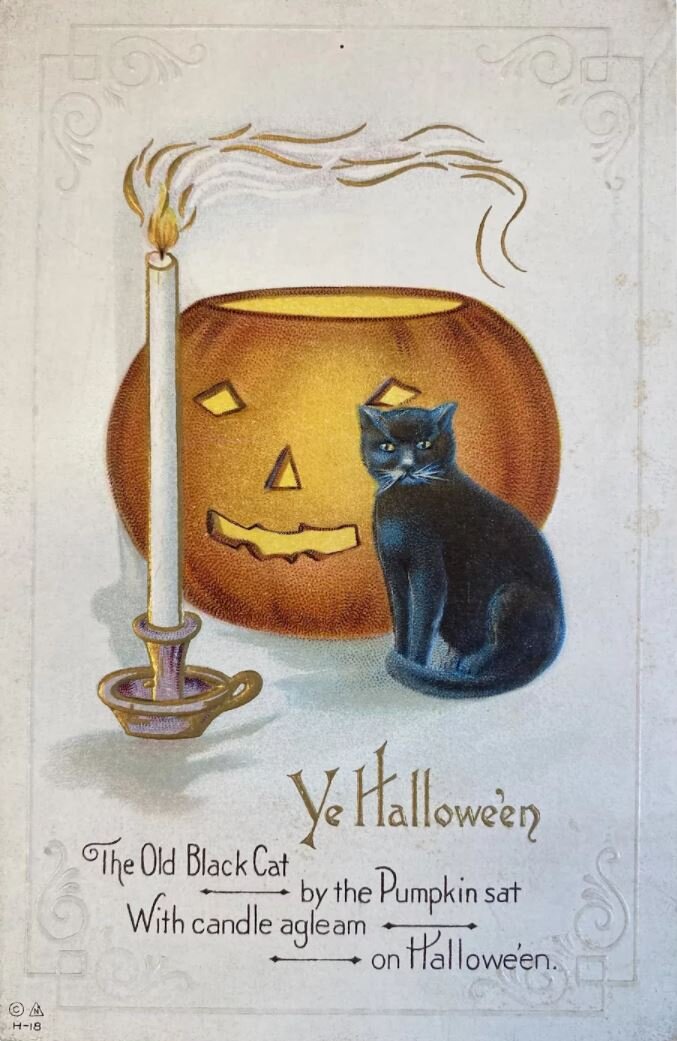


Halloween decoration, black cat, House of Good Fortune Collection.

Detail of Black Cat Halloween Costume by Spookville (Creatively named "Blackie")

Black Cat Halloween Costume by Spookville, House of Good Fortune Collection

Black Cat Pez Dispenser, House of Good Fortune Collection

Black Cat in front of full moon, Halloween decoration

Halloween noisemaker, House of Good Fortune Collection
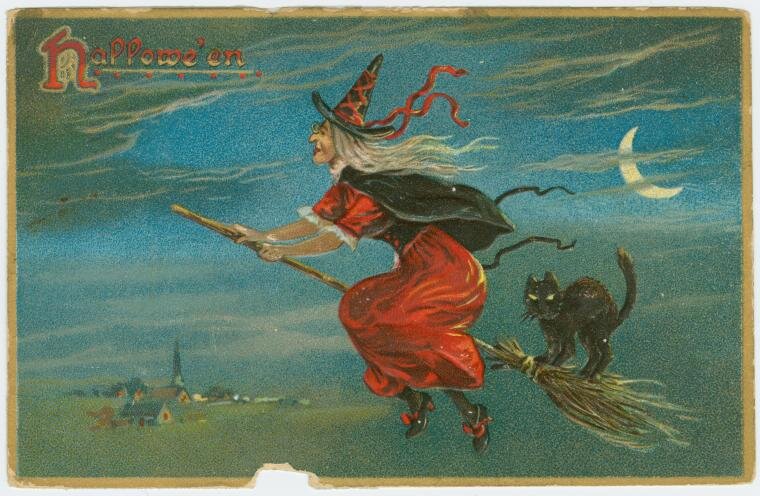
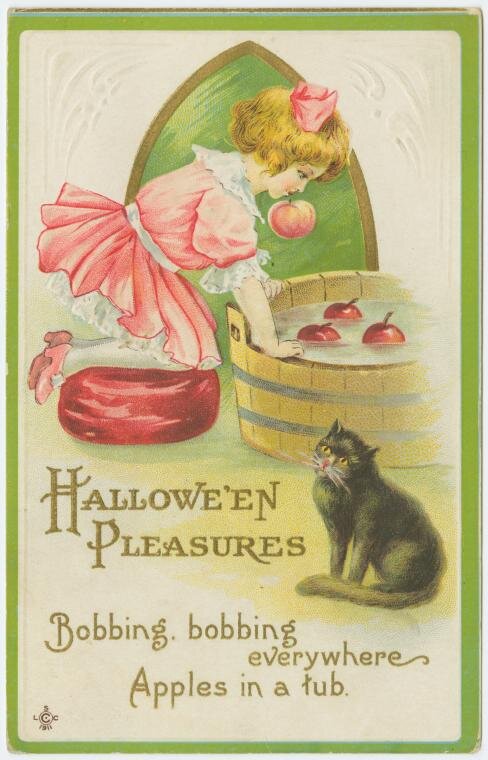




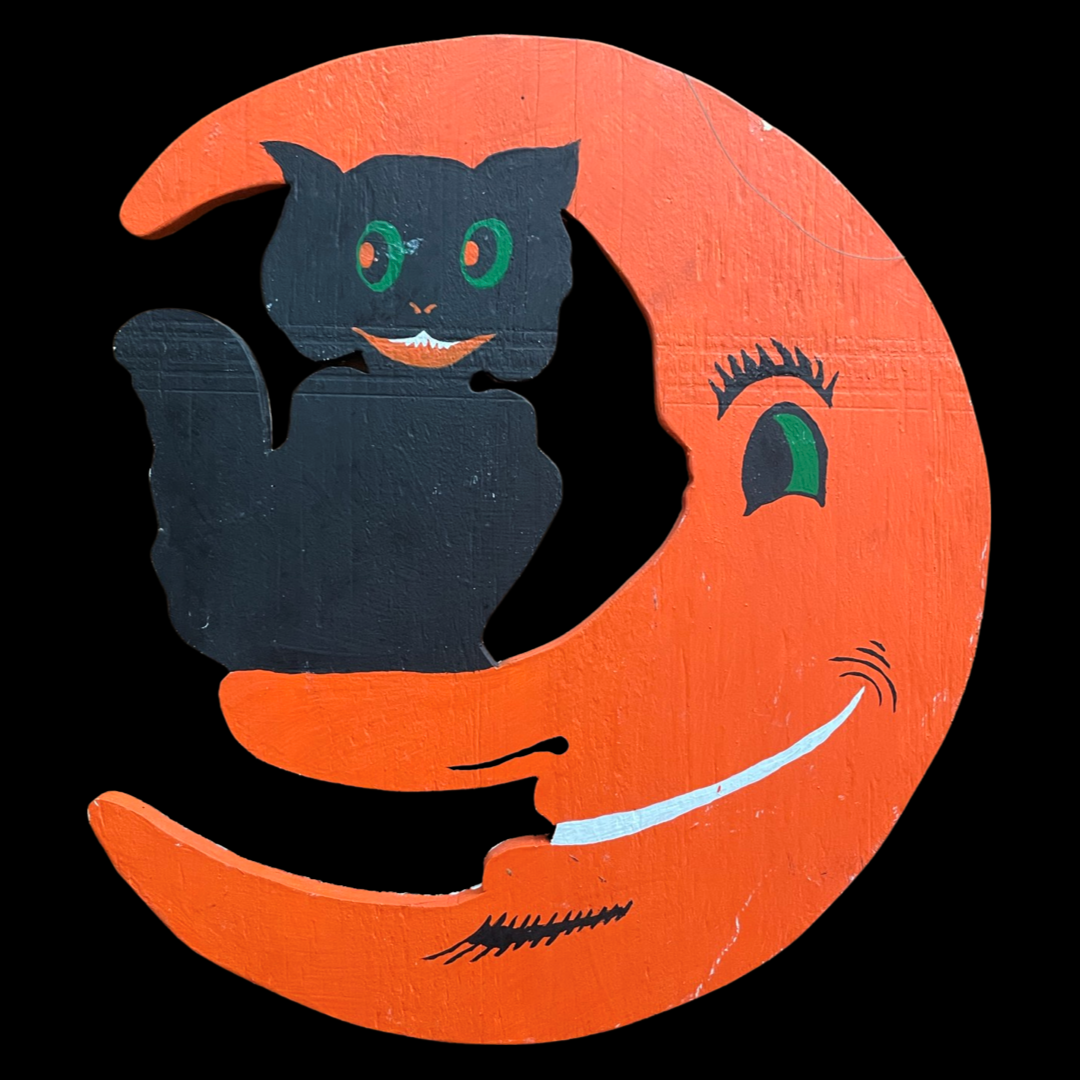
Cat in Crescent Moon, Wooden Cut-out, House of Good Fortune Collection
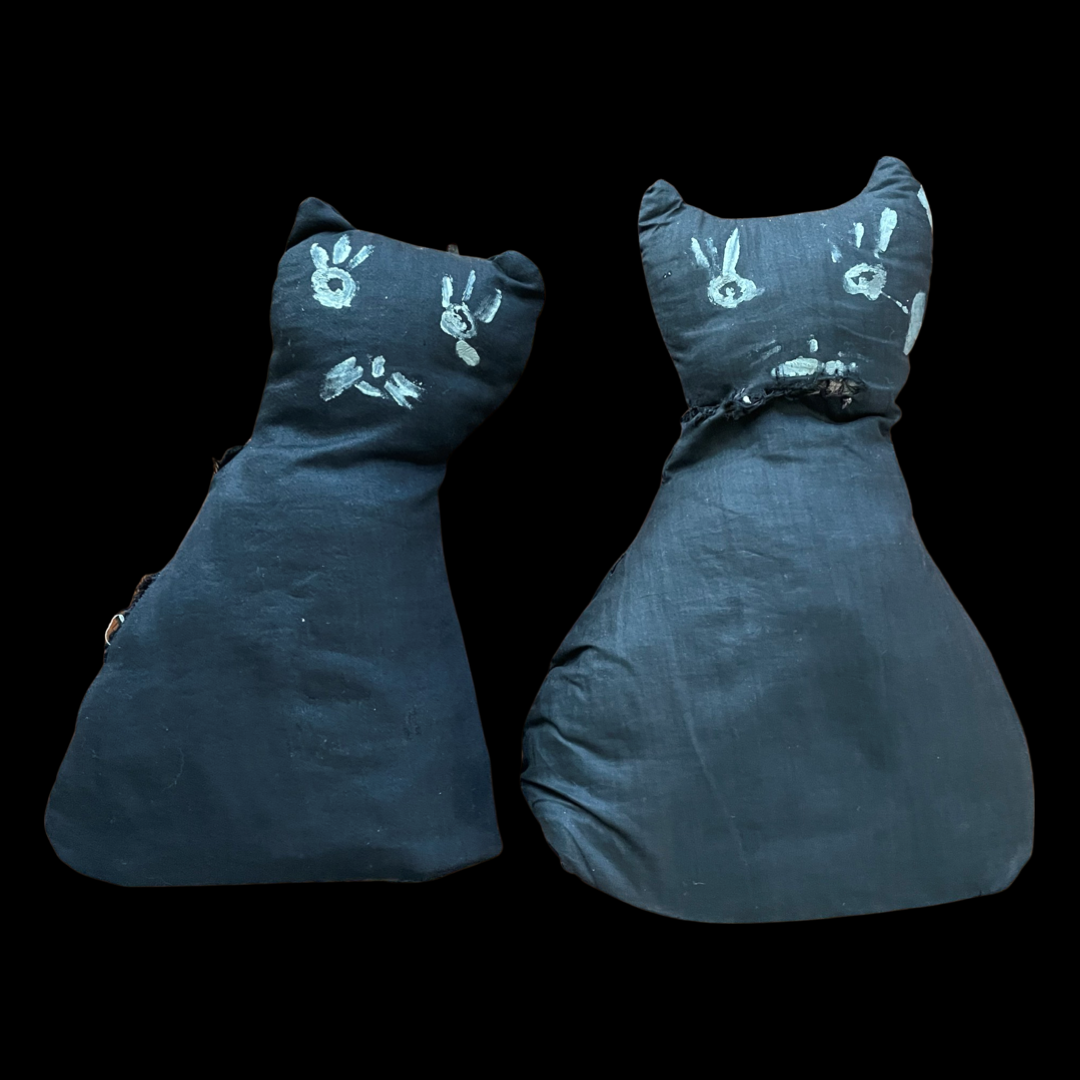
Handmade Primitive Plushie Cats, House of Good Fortune Collection
